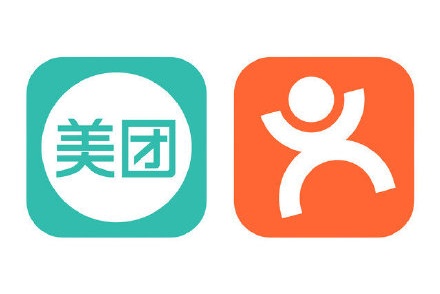The KOL darling Xiaohongshu is not the only review platform that’s drawing influencers in droves and worthy of KOL marketers’ attention. Meituan-Dianping is a “super app” widely known for its ecosystem of food delivery services, ride-hailing, cinema ticket reservations, and more, but it’s also responsible for helping restaurants, shops, and travel destinations generate hype among a nation of known foodies.
Meituan-Dianping: the “Chinese Yelp”
Named by Fast Company as the most innovative company of 2019, Tencent-backed Meituan-Dianping is also sometimes called the “Chinese Yelp”, but actually “aspires to be the Amazon of services”. To really grasp its influence would mean understanding just how much it is an integrated tool in China’s mobile internet landscape, as well as knowing how much millennials and Gen Z rely on and trust consumers sharing authentic feedback and experiences.
In September, shares of Meituan-Dianping reached their highest level since the company filed for an IPO in Hong Kong last year, and it’s been proving its weight as an influential travel tool on par with Ctrip and Qunar. In the second quarter of this year, the company reported nearly 43 percent year-on-year growth in travel and hotel bookings. According to Meituan-Dianping CMO, Stephen Shu, the company’s review app Dazhong Dianping is used by about one-third of China’s overseas travellers and is the third most-opened app among that group after WeChat and Google Maps. It’s also proving to be a significant authority in the domestic food scene—in 2018, the company published its inaugural Black Pearl Restaurant Guide, which has been dubbed China’s version of the Michelin Guide.
So what exactly does this mean for marketers?
Dianping, along with platforms like WeChat and Douyin, is a driver of hype in one of the most critical aspects of Chinese culture: food. Those that are successful in bringing buzz to their restaurant or cafe will certainly have enlisted the support of foodie KOLs to generate interest within their social networks. Cult brands like HeyTea illustrate just how well this type of marketing works—see Radii China’s case study on “Hermès Sour Bean Fried Rice” which went from an unassuming street stall to a trendy destination for food-obsessed of all backgrounds, just because a popular KOL shared a review with their followers.
Using Meituan-Dianping’s interface as a review platform or destination search is fairly simple. First, consumers can access it either via their own app or through a WeChat mini-program, allowing for seamless toggling between content and payments. Users can choose between a variety of categories, including restaurants, shops, spas, and cafes, filtering further by keywords like cost, cuisine, and location, and more. Like Xiaohongshu, suggestions for travellers or diners will be personalised based on types of content users normally look for within the app, as well as their location. A section of the front page of the platform is reserved for user-generated content, which includes photos, videos, likes, and comments on various destinations.
As with Amazon or Yelp, reviewers on Dianping are rewarded by other users for helpful reviews, and they’re also assigned a “level” based on how often they review so that other users can determine the reviewer’s level of expertise. A reviewer with a high level of expertise and experience can essentially be thought of as a micro-KOL; though they don’t have their own pages of content or followers within the Dianping app itself, marketers should be taking into consideration that their level of engagement with brands and products in the travel and food industries will inevitably have more of an influence on other users.

Similar strategies could be applied to Meituan-Dianping
Brands and marketers can follow similar KOL marketing strategies they might follow for Xiaohongshu in that those looking to promote their location as a foodie destination or shopping hot spot would do well to invite KOLs to their location to take photos and leave content-heavy reviews. This is an especially great opportunity for product seeding, whether it be a meal or a small gift for visiting a boutique. This seeding can even come in the form of creating in-restaurant “Instagrammable” photo opportunities to attract “wanghong” or micro KOLs and internet celebrities—though this should be backed up with quality food and dining experience to earn positive feedback. Eye-catching content isn’t limited to restaurants—shops with cheeky storefronts or window displays, like Shanghai’s Suit Supply, are also likely to generate buzz from enthusiastic photographers.
Much like Xiaohongshu, the platform functions somewhat as a “social commerce” website, where users can purchase products promoted through reviews directly on the app. Dianping users can take immediate action after reading content on the platform, either through ordering delivery, applying for a coupon or promotion, or making restaurant reservations, underlining the importance of quality user-generated and influencer content in the Meituan-Dianping ecosystem. For context, Meituan, the food delivery arm of Meituan-Dianping, did $2.77 billion in food delivery transactions across 2,800 Chinese cities in the first half of 2018.
Overseas, Meituan-Dianping has embarked on a number of partnerships that allow China’s users access to more localised guides when they travel abroad. Singapore’s Chope integrated its database of more than 4,000 restaurants across Southeast Asia with the platform earlier this year, while over the summer, Dianping partnered with Australia-based hotel guest acquisition platform SiteMinder to expand into the Southeast Asian hotel booking market, and eventually internationally. However, it’s worth noting that unlike TripAdvisor, which is primarily used for travellers, Dianping is also a highly local app thanks to a system of discounts and promotions that motivate consumers to constantly turn to Dianping to find restaurants and services in their immediate area.
Brands of other categories could engage with Dianping too
Brands outside the restaurant and hotel scene are engaging with Dianping in innovative ways. Late last year, Louis Vuitton listed its traveling exhibition “The Art of Travel”, which came to Shanghai in November 2018, on Dianping (along with Mobike and Ctrip) as a travel destination so that users could find the event and review it through the app. The listing was part of a broader “24 hours in Shanghai” guide that included restaurants, cafes, and local shops that aligned with the French fashion house’s brand image. Feedback from visitors was positive if the Dianping reviews were anything to go by; according to Jing Daily, users were sharing images and giving tips on the best places to take photos in the exhibition, which would have ultimately lead to word-of-mouth marketing fuelled by micro-influencers across multiple social media platforms.
Ultimately, brands and marketers in the food and travel space should, at the very least, be taking the opportunity to look to Dianping to gauge the community’s sentiment around their product and using this information to inform an influencer strategy. A KOL action plan should be a multi-pronged one that takes into consideration where consumers spend most of their time engaging and interacting with brands—and Dianping doesn’t seem to be losing that space anytime soon.










Leave A Comment